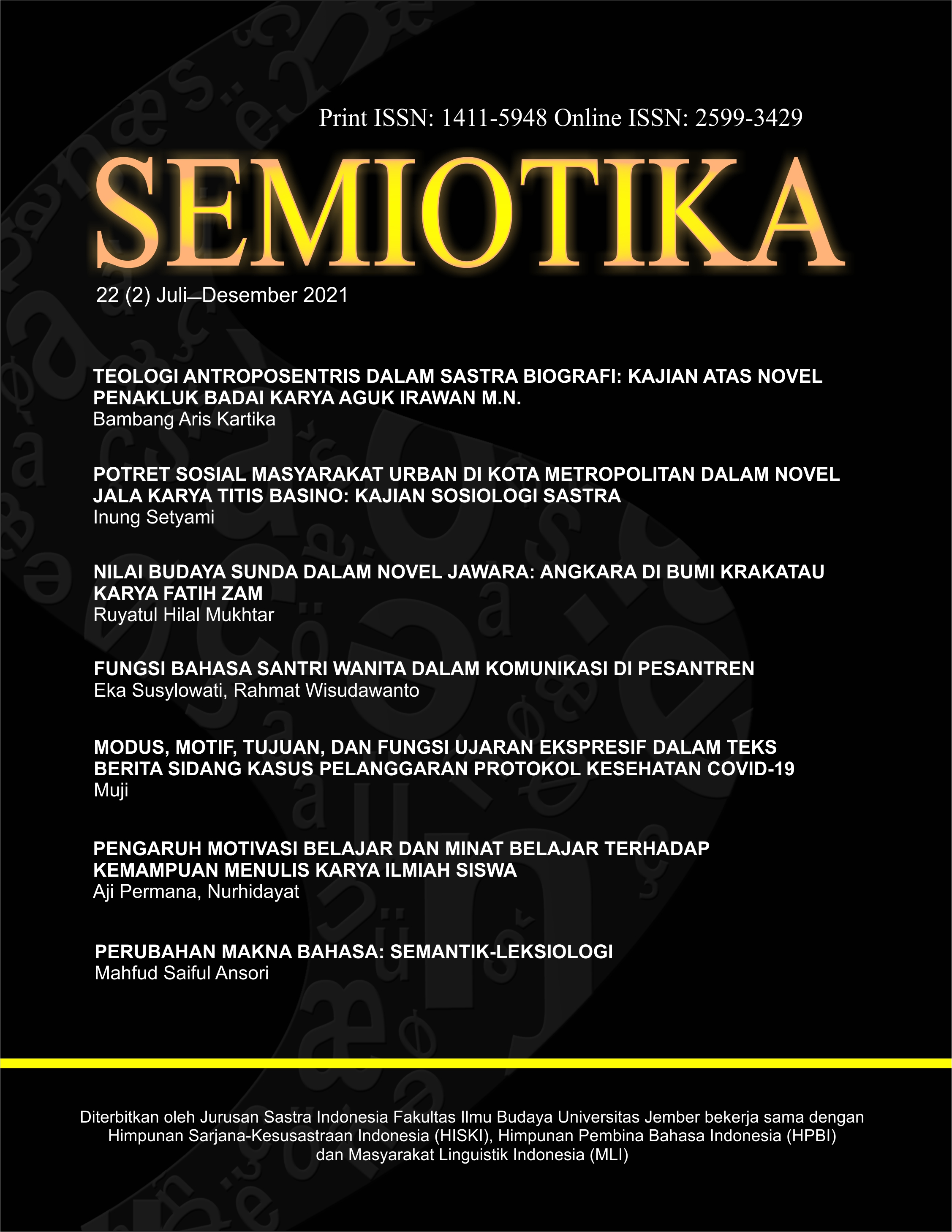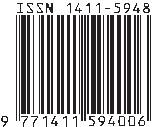NILAI BUDAYA SUNDA DALAM NOVEL JAWARA: ANGKARA DI BUMI KRAKATAU KARYA FATIH ZAM
Abstract
This article talks about the social values in Jawara Angkara di Bumi Krakatau by Fatih Zam, particularly displaying the culture for the Sundanese ethnic community in Banten (a locale in West Java). The study points to depicting social value in the novel based on anthropological theory as a scholarly learning procedure for the younger generation. A method is a qualitative approach and content analysis to describe the substance of social values based on the occasions described in the novel. Based on information preparation, the results are about the social values in Sundanese society, counting a devout framework affected by Islamic culture, religious ceremonies such as customs to the heavenly grave as a sign of vows. The social organization framework, as a previous Islamic Kingdom (Banten), the position of the ulama in this region is excellent. It encompasses a significant social hierarchy within the structure of Banten society. The information framework, capacity, and information of the community to utilize plants and utilize apparatuses or recognize other life components, such as making houses, cooking, treating, and others. The language system used by the individuals of Banten is in rough Sundanese, although it is also known other style fine and medium Sundanese. The art system as the cultural identity of the Sundanese ethnic community in Banten is silat, debus, and machetes. The job framework of the individuals of Banten is ranchers, dealers, anglers, and cleavers makers. The system of technology and equipment, productive tools that still use traditional materials, such as for fishing and farming, and the mode of transportation still use horses.
SEMIOTIKA has CC-BY-SA or an equivalent license as the optimal license for the publication, distribution, use, and reuse of scholarly work. Authors who publish with this journal retain copyright and grant the journal right of first publication with the work simultaneously licensed under a Creative Commons Attribution-ShareAlike 4.0 International License that allows others to share the work with an acknowledgment of the work's authorship and initial publication in this journal.
Attribution-ShareAlike
CC BY-SA










